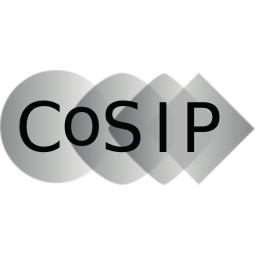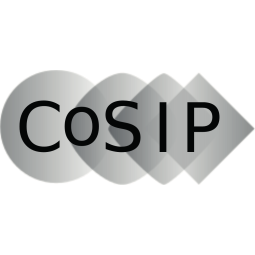Compressed Sensing Algorithms for Structured Massive MIMO
 Massive MIMO, i.e., very large scale multiuser multi-antenna technology, is widely expected to play a fundamental role in meeting the target performance of the future generation of wireless/cellular networks, commonly indicated as ``5G’’. The key idea is that by scaling up the number of jointly processed antennas at the infrastructure side (i.e., in the base stations), the wireless channel, notoriously affected by random propagation effects, converges to a deterministic limit in which the network behaves in a predictable and very desirable manner, where intra-cell multiuser interference can be nulled by precoding, and intra-cell interference can be easily controlled. Massive MIMO has been widely analyzed under simple independent and identically distributed channel statistics, and under the naive assumption that the precoding/beamforming operations can be implemented by standard baseband signal processing (fully digital domain). However, a major obstacle in the implementation of Massive MIMO is represented by the very high complexity of the signal acquisition, requiring demodulating and sampling the output of hundreds of antennas. In this project, we propose to exploit the fine structure oft he wireless scattering channel in the asymptotic regime of a large number of antennas, in order to develop a low-complexity ``structured’’ approach to Massive MIMO. The key observation is that the channel (random) vectors are spatially correlated, and therefore they are sparse in the domain of their Karhunen-Loeve basis. Hence, ideas and techniques from sparse signal processing (sensing and reconstruction) become instrumental to devise new transceivers’ architectures, which eventually make Massive MIMO implementable in practice. The central questions that we propose to investigate include: finding universal sparsifying bases or frames to represent general channel spatial correlations; consider wideband channels with sparsity in both the angular and delay domain; understand the tradeoffs and the methods of treating sparsity in the continuous rather than in the discretized domain; understanding the tradeoff, in terms of stable reconstruction of sampling rate versus quantization resolution; consider sparse signal separation in multiuser environments with multiple sparse interferers in the angle-delay and time domain; developing dimensionality reduction techniques that make Massive MIMO affordable also for Frequency-Division Duplexing systems.
Massive MIMO, i.e., very large scale multiuser multi-antenna technology, is widely expected to play a fundamental role in meeting the target performance of the future generation of wireless/cellular networks, commonly indicated as ``5G’’. The key idea is that by scaling up the number of jointly processed antennas at the infrastructure side (i.e., in the base stations), the wireless channel, notoriously affected by random propagation effects, converges to a deterministic limit in which the network behaves in a predictable and very desirable manner, where intra-cell multiuser interference can be nulled by precoding, and intra-cell interference can be easily controlled. Massive MIMO has been widely analyzed under simple independent and identically distributed channel statistics, and under the naive assumption that the precoding/beamforming operations can be implemented by standard baseband signal processing (fully digital domain). However, a major obstacle in the implementation of Massive MIMO is represented by the very high complexity of the signal acquisition, requiring demodulating and sampling the output of hundreds of antennas. In this project, we propose to exploit the fine structure oft he wireless scattering channel in the asymptotic regime of a large number of antennas, in order to develop a low-complexity ``structured’’ approach to Massive MIMO. The key observation is that the channel (random) vectors are spatially correlated, and therefore they are sparse in the domain of their Karhunen-Loeve basis. Hence, ideas and techniques from sparse signal processing (sensing and reconstruction) become instrumental to devise new transceivers’ architectures, which eventually make Massive MIMO implementable in practice. The central questions that we propose to investigate include: finding universal sparsifying bases or frames to represent general channel spatial correlations; consider wideband channels with sparsity in both the angular and delay domain; understand the tradeoffs and the methods of treating sparsity in the continuous rather than in the discretized domain; understanding the tradeoff, in terms of stable reconstruction of sampling rate versus quantization resolution; consider sparse signal separation in multiuser environments with multiple sparse interferers in the angle-delay and time domain; developing dimensionality reduction techniques that make Massive MIMO affordable also for Frequency-Division Duplexing systems.
Publications:
-
arXiv: [link to appear]
Compressive Estimation of a Stochastic Process with Unknown Autocorrelation Function
M. Barzegar, S. Haghighatshoar, G. Caire, G.Wunder

